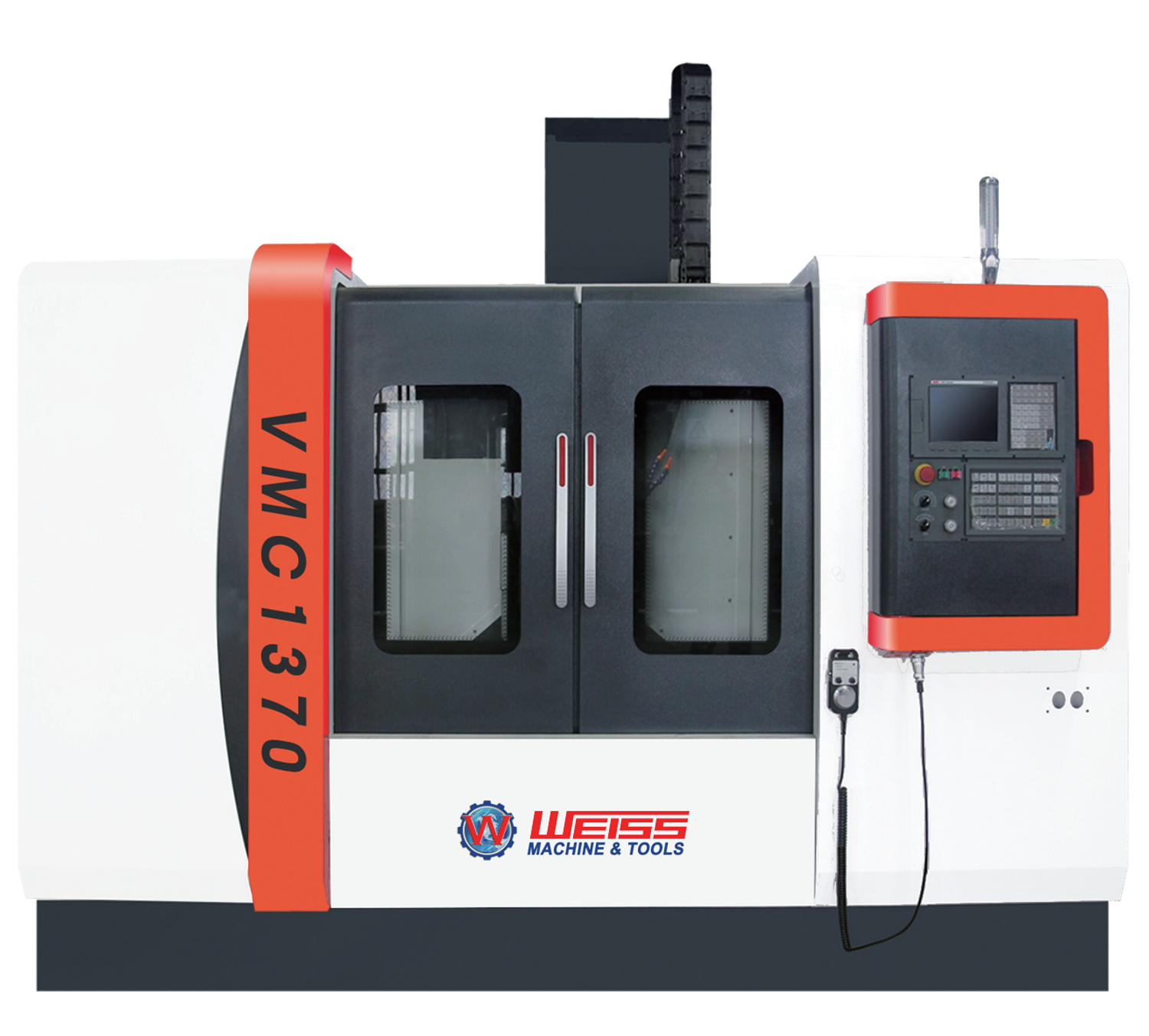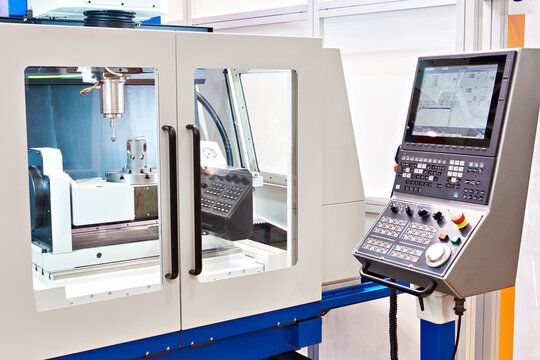
Get A Quote
How Does a CNC Turning Center Work?
The world of modern manufacturing heavily relies on precision and efficiency, both of which are achieved through advanced machinery like CNC turning centers. Understanding how these machines operate is crucial for anyone looking to improve their production processes. Whether you’re a machinist, engineer, or business owner, this guide to CNC turning centers will explain the basic principles, the inner workings, and how a CNC machining center works to produce high-quality parts with unparalleled accuracy.
What is a CNC Turning Center?
A CNC turning center is a sophisticated machine tool designed to rotate a workpiece while various cutting tools move across it to remove material. This process, known as turning, is primarily used for producing cylindrical parts such as shafts, pulleys, and hubs. CNC stands for Computer Numerical Control, meaning that the machine operates based on coded instructions programmed by an operator, allowing for extreme precision and repeatability.
How Does CNC Turning Differ from CNC Milling?
While CNC turning centers focus on rotating the workpiece, CNC milling machines primarily move the cutting tool around a stationary workpiece. Both processes are integral to modern machining, but CNC turning is best suited for cylindrical or symmetrical components. Understanding these differences is key to optimizing production depending on your project requirements.
How Does a CNC Turning Center Work?
To fully understand how a CNC turning center works, it’s essential to break down the various components and steps involved in the machining process.
1. Workpiece Setup
The first step in any CNC turning operation is the proper setup of the workpiece. The workpiece is mounted on a spindle, which rotates it at high speeds. The speed of the spindle can be adjusted according to the material and the desired outcome. The precise control over the rotation is one of the defining features of CNC turning center work.
2. Tool Setup
Once the workpiece is mounted, the cutting tool is set in place. In most CNC machining centers, the tools are mounted on a turret, which can hold multiple cutting tools at once. This allows the machine to switch between tools during the operation without manual intervention, further enhancing the machine’s efficiency and versatility.
3. Programming the Machine
A CNC turning center operates based on a pre-programmed code called G-code. This code contains instructions that tell the machine how to move the cutting tools and the spindle. Operators use CAD (Computer-Aided Design) and CAM (Computer-Aided Manufacturing) software to create the design and convert it into G-code. Once the program is loaded, the machine follows the instructions with incredible precision.
4. Turning Process
During the turning process, the spindle rotates the workpiece at high speeds while the cutting tool moves along the X and Z axes. The tool cuts away excess material from the workpiece, shaping it according to the programmed design. The CNC turning center work ensures that the dimensions and surface finish of the part meet exact specifications, providing high accuracy and reducing the need for secondary operations.
Key Features of a CNC Turning Center
A CNC turning center is a complex piece of machinery with many features designed to enhance productivity and precision. Let’s explore some of the most important components that make up a typical turning center.
1. Turret
The turret holds the cutting tools and rotates to bring the appropriate tool into position. This allows for continuous machining without pausing the operation to change tools manually, which is a huge time-saver in CNC machining center work.
2. Spindle
The spindle is the part of the machine that holds and rotates the workpiece. The rotational speed of the spindle can be precisely controlled to suit different materials and machining requirements.
3. Tailstock
For longer workpieces, a tailstock may be used to support the end of the workpiece opposite the spindle. This prevents the workpiece from bending or deforming during the turning process, which is critical for ensuring accuracy in larger components.
4. Chuck
The chuck is used to grip the workpiece and hold it securely in place during the turning operation. Chucks come in different designs depending on the type of workpiece and machining requirements, adding versatility to the CNC turning center.
5. Control Panel
The control panel is where the operator interacts with the machine. It displays vital information such as spindle speed, tool position, and program status. Modern control panels are equipped with touchscreen interfaces and advanced software that makes CNC turning explained easier for machinists.
Advantages of Using a CNC Turning Center
Investing in a CNC turning center can bring numerous benefits to your manufacturing process. Here are some key advantages that make these machines indispensable in modern machining operations:
1. Precision and Accuracy
One of the main reasons companies use CNC turning centers is for their unparalleled precision. By using computer-controlled instructions, these machines can produce parts with extremely tight tolerances and high surface finish quality, reducing the need for manual adjustments.
2. Efficiency
CNC turning centers are designed for high-speed operations. With automated tool changes and continuous operation, they can produce parts much faster than manual machines. This guide to CNC turning centers highlights how these machines can help you optimize productivity in your shop.
3. Versatility
CNC turning centers can handle a wide variety of materials, including metals, plastics, and composites. They are also capable of producing parts in many different shapes and sizes, making them highly versatile for various industries.
4. Reduced Human Error
Because the operation is controlled by precise programming, the risk of human error is greatly minimized. This not only improves product quality but also reduces material waste and increases overall efficiency.
Applications of CNC Turning Centers
CNC turning centers are used in a wide range of industries, from aerospace and automotive to medical devices and electronics. They are ideal for producing:
- Shafts and axles
- Bushings
- Connectors and fittings
- Hubs and couplings
These components are essential in various mechanical systems, and CNC machining center work ensures they are produced to the highest standards.
How to Choose the Right CNC Turning Center for Your Needs
Selecting the right CNC turning center depends on several factors, including the complexity of the parts you need to produce, the materials you’re working with, and the level of precision required. Here’s a quick guide to help you make the right decision:
1. Consider the Type of Workpieces
The size and shape of the workpieces you’ll be machining play a significant role in determining which CNC turning center is right for you. Larger machines with more robust spindles may be needed for heavy-duty work, while smaller models may suffice for lighter, more detailed parts.
2. Evaluate Your Production Volume
If you’re producing parts in large quantities, investing in a high-speed CNC turning center with automated tool changing and efficient spindle speeds will be crucial for maintaining productivity.
3. Assess Material Compatibility
Not all machines are suitable for every material. Some CNC turning centers are better equipped to handle metals, while others may excel with plastics or composites. Understanding your material needs is key to selecting the right machine.
Conclusion
In summary, understanding how a CNC turning center works is critical to optimizing efficiency and precision in modern manufacturing. From its capability to handle complex parts with high accuracy to its automated features that save time and reduce errors, a CNC turning center is an essential tool for any machining operation. Whether you're dealing with intricate designs or large-scale production, these machines deliver consistent and reliable results.
At WEISS Machine, we pride ourselves on offering cutting-edge CNC turning centers that are designed to meet the diverse needs of industries across the globe. Our solutions provide exceptional performance, precision, and durability, making them the ideal choice for businesses seeking to boost their production capabilities. Trust WEISS Machine to deliver the advanced technology and support you need to take your CNC machining center work to the next level. Explore our wide range of products and discover how WEISS Machine can help you achieve superior machining outcomes.


